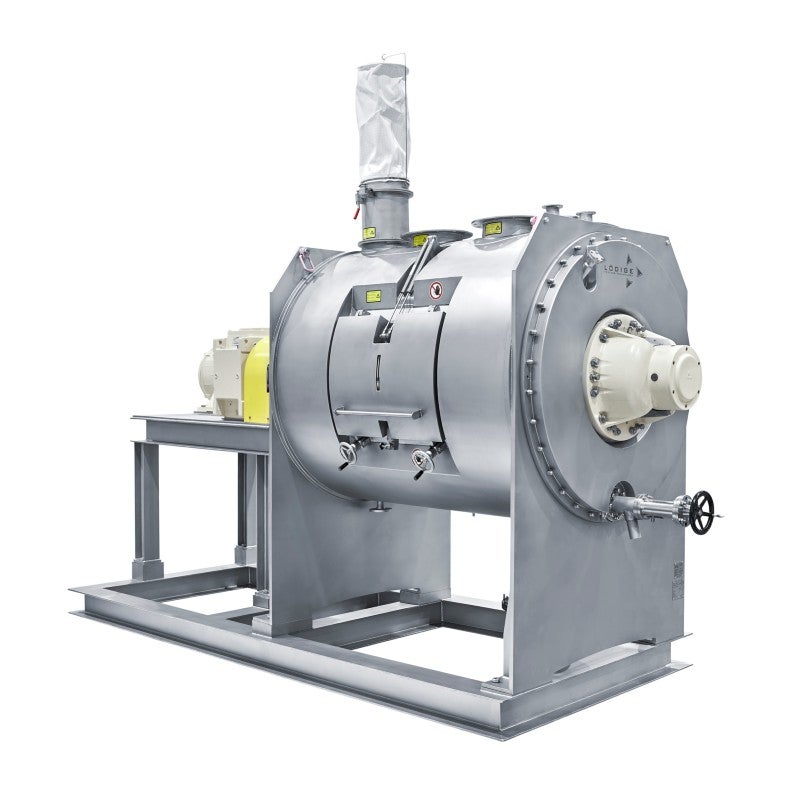
With the conche invented by Rudolphe Lindt in 1879 the chocolate required 72 hours to achieve its creamy, smooth consistency. Today, chocolate manufacturers are looking for more cost effective, and above all, faster alternatives to the traditional conche. These requirements are effectively fulfilled by Ploughshare® Mixers.
Ploughshare® Mixers operate according to the mechanically-generated fluid bed principle introduced by Lödige to industrial mixing technology. The operating principle can be described briefly as follows: Ploughshare® Shovels arranged on a shaft in a special system rotate as mixing elements in a horizontally aligned, cylindrical drum. These shovels create a three-dimensional movement of the components to be mixed. The resulting mechanically-generated fluidised bed ensures fast, gentle and precise mixing. Separation of the particles in the fluidised bed facilitates the addition of liquids and particle coating. If needed, the mixing process can also be supported by high-speed rotating choppers. Thanks to their flexibility, Ploughshare® Mixers are very versatile in their range of applications, e.g. in chocolate manufacture.
In chocolate manufacturing, conching is understood as the transformation of a crumbly, rolled material into a free-flowing suspension with clearly defined rheological and sensory properties – with as little dilution as possible through the addition of cocoa butter. The process engineering for conching basically functions as follows:
- Dry conching
- Plasticising
- Liquefying
A Ploughshare® Mixer with appropriately modified shovels can be employed as an effective conching tool. The design of the side walls provides large surfaces for the product drying phase. Because the particles are separated in the fluidised bed, they come into contact with air more vigorously and more frequently. The design and adjustment of the base plate in relation to the tempered mixing drum wall allows the introduction of high frictional energy. Due to the shape of the tools and their systematic arrangement on the mixer shaft, the mass is continuously, entirely and vigorously mixed, resulting in a lump-free, homogeneous end product.
Control of the process is dependent on output and time, and the rotational speed is regulated by the power consumption of the motor. Targeted temperature equalisation of the mass takes place via the application of warm or cold water running through the double jacket of the drum wall. Larger mixers require scrapers on the endplates. Additional nozzles are installed on the endplates for the injection of purified compressed air. This supports the discharge of vapours that arise during the conching process. With comparable product quality, this system is capable of significantly reducing processing time.










